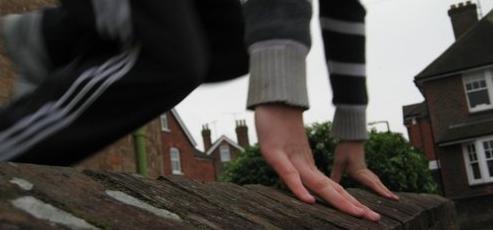|
Training in the Winter
Training, in the Winter
Its obvious that it is harder to train in the winter, than in the summer. The rain, the cold, and snow, can all render the best training spots temporarily un-trainable. Slippery surfaces, are a traceurs worst enemy. Another problem we face is it being too cold to move, or it being so cold you have to wear so much clothing it is impossible to move anyway! There are ways of getting round these dilemmas.  If you have just been turning home whenever you see grey clouds looming towards you, you may have been missing out. Winter is a chance to find new spots that you may not of found otherwise. The perspective that bad weather is impossible to train in, leaves you totally controlled by a completely uncontrollable factor. Weather often changes, and traceurs should adapt to this as they would obstacles. Training in the winter does require some adaptation, carrying on oblivious would be stupid and frankly dangerous. Training in the cold and the wet could be though of as a true test of your dedication to parkour. Extremely low temperatures can hinder our performance. Exposure to these temperate can lead to hypothermia, or even frost bite. The body has no way of raising body temperature like it can lower body temperature by sweating, and raising blood to the surface. So warming up and staying warm is really important. Warming Up Staying Warm Looking for Spots in the Winter Multi-storey car parks can be useful in the winter, as they act as a shelter from snow and rain. But it is important to remember you are in a car park, with cars and you should respect the cars and drivers just as you would pedestrians. With preparation, extra care and attention during winter training, it is possible to maintain a training regime throughout winter, and autumn. By learning to adapt and work with different conditions there is no reason your training should suffer from the current weather.
|




